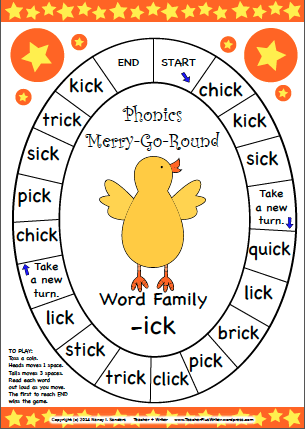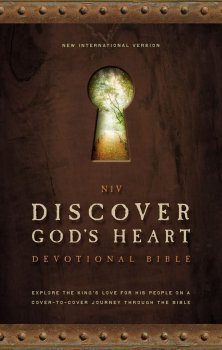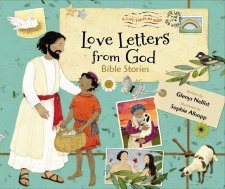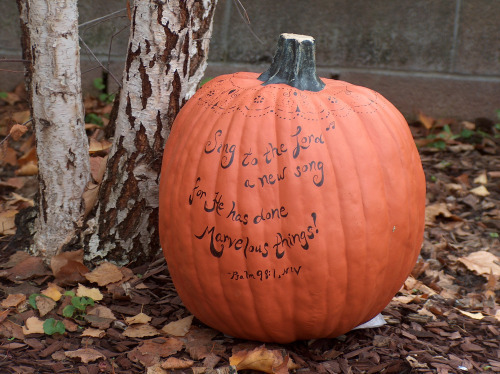Nancy I. Sanders's Blog, page 52
December 15, 2014
Writing Opportunity: The Glossary
For the nonfiction manuscript we’re writing for Kaeden, it’s time to roll up our sleeves and write the glossary!
Adding a glossary to a story geared for second grade elementary kids automatically supports the Common Core. Here’s the specific standard it supports:
CCSS.ELA-LITERACY.RI.2.5
Know and use various text features (e.g., captions, bold print, subheadings, glossaries, indexes, electronic menus, icons) to locate key facts or information in a text efficiently.
Most of Kaeden’s nonfiction books have a glossary, so we should put one in ours, too.
My mentor text, THE BIRDFEEDER, doesn’t show a glossary in its google preview, so I found a similar one that does. Click on FIESTA and look at the google preview if you’re doing one at this level. Otherwise, check your own mentor text or a book similar to it to follow as a guide.
To make my glossary, I chose 4 words in my manuscript that kids might not know. You can choose 2 to 4 words to explain further in your glossary, too.
First I highlighted these words in the actual text of the story.
Next I listed them alphabetically in my glossary on page 15 of my book.
Then I looked up each word online in the Merriam-Webster free online dictionary. Why did I use this dictionary? Mostly because when I was working on early readers with a different publisher these last couple of years, that was the publisher’s go-to dictionary of choice. So I used it for now until I find what Kaeden Book prefers if they offer me a contract to write more of these books.
Another reason I chose to use this dictionary as a reference for my own glossary that I’m making is because most words have a feature under their full definition that you can click on to see the definition for kids. I always like to see how other people word things for kids. It helps me keep my own writing kid-friendly.
After I looked at both definitions (the regular one and the kid-friendly one) then I wrote each word’s definition in my own words on my manuscript. It’s always best to do this so you don’t have to mess with the copyright infringements of dictionaries you use. Plus, it’s just good practice learning how to put things in your own words like this.
So if you haven’t yet done so, go ahead and write your Glossary!
Filed under: Beginning Readers, Nonfiction

December 12, 2014
Welcome to My World: A Sneak Peek
I’m excited to give you a sneak peek today of what’s been happening in my world this last year. A brand new set of beginning readers is about to be born! BIBLE FAVORITES, the first set in the ONE SENTENCE STORYBOOKS series is preparing for release in January/February 2015!
It’s been a busy week this past week here at my house and at my publisher’s. I wanted to share a little bit of the inside story of what goes on behind getting a new book series launched.
* I finished preparing a blog post they will post on the publisher’s blog to coincide with the books’ release.
* The publisher e-mailed and said they recorded an audio version of the books this week. (Now THAT’S exciting.)
* My main editor e-mailed and said she might be in my area around the time of the books’ release–maybe we could get together?!!!!!!
* Marketing e-mailed and said let’s schedule a phone call in January to discuss marketing ideas
* We tossed around some ideas for building the books’ website so it’s ready to launch when the books are released.
* The publisher sent me a near-final copy of the book’s cover so I can post it here on my blog and also on a page I’m building on one of my sites, Bookzone, where I list my published books.
Whew! And as if that wasn’t enough, I decided to start building some of my author’s platform to support the books’ launch as well. Because this new series is all about teaching kids to read, I decided to post material for sale in our store, Teacher Plus Writer, on Teachers Pay Teachers that teachers can use to help students learn to read. In the blurb for these products I give a plug for ONE SENTENCE STORYBOOKS.
So with all that going on, I’m happy to introduce PHONICS MERRY-GO-ROUND games to the world! These printable board games help young children get excited and get reading while playing fun games. You can see the sample of one of them below.
One of the things I wanted to share with you about this is that it was a little bit tricky for me to figure out which standards my PHONICS MERRY-GO-ROUND games support for the Common Core. So here’s a tip. If you’re having trouble figuring this out, just search on Teachers Pay Teachers for products similar to yours that say they support the Common Core. Then look up those standards that they support and see if your product supports that same standards as well.
If you’re seriously considering posting material to Teacher’s Pay Teachers, my sweet writing friend, Tina Cho, mentioned on her recent blog that she might be giving tips out on this. (Way to go, Tina!) So if you don’t yet, sign up to follow Tina’s blog. She’s a Christian, she’s a teacher, she’s a homeschooling mama, she’s a blogger who shares, and she’s a published writer. What better combination can you ask for?
But now it’s back to the nonfiction stories we’re preparing to submit to Kaeden. Watch for this in my next post!
Filed under: Beginning Readers, Bible Stories

December 11, 2014
Teachers Pay Teachers and more
As many of you know, I posted my nonfiction story on Teachers Pay Teachers at the store my husband and I have.
And Tracy asked me if she could open a store there if she’s not a teacher.
The answer to this is…just ask!
That’s what I did when I wanted to open a store. I’m not a teacher, but my husband is. So I sent an e-mail to Teachers Pay Teachers and asked if I could sell stuff I write on there even though I’m not a teacher but my husband is. They graciously replied and welcomed me on board.
So if you’re not sure you qualify to sell products there or not, just e-mail them and ask! They’ll help get you the right information according to your personal circumstances.
And guess what?!!! Tina Cho, a dear friend and awesome writer, has just opened her own store on Teachers Pay Teachers, too!!! Yay! Way to go, Tina!
CLICK HERE to get her freebie, Holiday Haiku Craftivity (what a great product!)
CLICK HERE to buy her nonfiction product on martial arts for kids, Kicking Off the New Year Right. (Kids will LOVE this.)
Filed under: Nonfiction

December 5, 2014
Writing Opportunity: Table of Contents
As many of you know, we’ve been working on writing and submitting a nonfiction picture book to Kaeden Books. (If some of you are new to following my blog, you can CLICK HERE to start with the very first post I made about this adventure and get caught up.)
If you’ve not yet finished writing the text and the sidebars for your story, go ahead and get that finished up.
Today let’s talk about adding in the Table of Contents.
Some of you may be wondering why books such as The Bird Feeder have a Table of Contents. I mean, this is a short short book. Not very much text. That’s probably how your manuscript is, too.
It’s because of the Common Core State Standards. For example, if you look at the standards in second grade RI.2.5, you’ll see that this standard states:
Know and use various text features (e.g., captions, bold print, subheadings, glossaries, indexes, electronic menus, icons) to locate key facts or information in a text efficiently.
So simply by adding in a Table of Contents to your manuscript/book, it now supports the Common Core.
So go ahead and add a Table of Contents to your manuscript. If you have questions how to do that, look at your mentor text (The published book on Kaeden Books that is similar to the one you’re writing.)
First you’ll need to add page numbers to your own manuscript and then plug those page numbers into your Table of Contents. The main thing is to make sure your pages will be in the right layout for when the book is actually published.
Let me know if you have any questions!
Filed under: Beginning Readers, common core state standards, Nonfiction

November 30, 2014
Book Review: NIV Discover God’s Heart Devotional Bible
NIV Discover God’s Heart Devotional Bible
Zondervan
Summary
This NIV version of the Bible features a simple plan for reading through the Bible in one year: Six readings each week with one day off every week for a total of 52 weeks. The unique feature of this Bible, however, is that each of these readings is accompanied by a one page devotional that includes three keys:
God’s Story
This is a summary of the passages you just read. This is especially helpful in some passages that may be more difficult to read through or hard to understand. This pulls out the main theme of the section they highlight.
The King’s Heart
This section of the devotional really reveals God’s heart. I especially love this section because so often unbelievers quote a passage from the Bible and criticize God for doing such and such. In this section of the devotional, we are reminded that God’s love is so infinite for each of us and that the events in the verses we just read were part of God’s amazing plan to shower his love on us and protect us and bring about His ultimate good in our lives and in the lives of the people who were living at that time.
Insight
This section of the devotional is so helpful to understand at a deeper level what the passages we just read in the Bible are really all about. It really sums things up in a nutshell
What I Like
The devotionals included for each day’s reading are unique from other Bibles (and I have a lot since I’ve read through the Bible each year for many years!). This Bible, overall, has a very simple feel. No commentaries for the verses. Just simple footnotes. No maps or concordance or other features. The whole focus of this Bible is to reveal God’s heart to us from the first page of Genesis to the last page of Revelation.
I think this Bible can be given to someone who has been hurt or who has felt abandoned by God because that person can find healing and hope and see that God really does love them passionately and beyond what they could ever have imagined. Just reading the devotionals myself made me feel very encouraged and loved. The great God of the universe loves me (and you!) in a very personal way as is revealed through His Word, the Bible.
As a bonus to the one year reading plan, in the back there are also several other reading plans including:
* A tour of the Bible in 90 days
* A 30 day reading plan for a new Christian
* A 30 days with Jesus reading plan (I love this!)
* 30 themes in Psalms
* And more!
-Thanks, BookLook Bloggers for another wonderful free book in exchange for my honest review!
Filed under: Book Review

November 29, 2014
Book Review: Love Letters from God
Love Letters from God: Bible Stories
A Lift the Flap Book
Written by Glenys Nellist
Illustrated by Sophie Allsopp
Summary
This children’s book features retellings of 9 Old Testament Bible stories and 9 New Testament Bible stories starting with the Creation of the world and concluding with the Resurrection of Jesus. These stories are very sweet to read aloud to young children such as, “The Little Lost Lamb” where it says that the shepherd was counting his sheep and realized Little Fluffy was missing (based on the parables of the Lost Sheep in Luke 15). Another story, “The Super-Duper Picnic” tells how a little boy named Nathan got to share his lunch of five loaves of bread and 2 small fish with Jesus (based on Feeding the 5,000 in John 6).
The unique feature of this book is that each story is accompanied by a “Love Letter from God.” You lift the flap and see the letter inside. There is a line to write your child’s name on, “Dear _____,” This is followed by a personal message from God. For example, for “The Super-Duper Picnic,” the letter says, “Imagine how happy Nathan felt when he made Jesus smile. Do you think you can make Jesus smile too? You can! Whenever you are kind, whenever you are generous like Nathan, that makes Jesus smile. And guess what–when Jesus smiles, I smile too! With lots of love, God.”
There is also a Bible verse featured along with each story and letter that is very encouraging to young children and reassures them of God’s love. For example “I am pleased with you,” -Exodus 33:17.
What I Like
The first thing I noticed about this book was how beautiful it is. The artwork is simply delightful with butterflies, birds, seashells, and buttons scattered throughout the pages. Children love mail and the envelopes are decorated with precious postage stamps that relate to the story. The people’s faces are so tenderly done…this is truly an artistic style that is a joy to share with little ones. Also the pages are thick and sturdy…a plus for a lift-the flap feature.
As I began to read the stories aloud, I also noticed how well-written and fun each story is. This isn’t a Bible for kids…this is a collection of imaginative and creative stories with fun word plays such as the very smelly belly inside Jonah’s giant fish and plip plop, plip plop for the rain that started the Flood. This is a good book to snuggle up with and read to your child at bedtime or on a snowy day when you’re stuck inside. The personal love letter from God helps little ones (and us) be reminded that God is a personal God who loves each one of us and wants to communicate with us.
-Thanks, BookLook Bloggers for another wonderful free book in exchange for my honest review!
Filed under: Book Review

November 27, 2014
Happy Thanksgiving!
Sing to the Lord a new song,
for He has done marvelous things.
-Psalm 98:1, NIV
Happy Thanksgiving!
What a wonderful time to gather with family and friends and share in the rich blessings the Lord has given to each of us.
I pray that no matter where you are or what your circumstances are that you will be filled with an overwhelming joy and thankfulness for our amazing God.
If you’re called to be one of God’s scribes and would like devotions to encourage you along your journey, please visit my site Scribes.
And if you’ve never yet met God personally or would like to know more about how to connect with the best friend you could ever have, please CLICK HERE.
Filed under: Uncategorized

November 26, 2014
Working with the Common Core
It was so much fun to hear from so many of you yesterday! I’m so glad so many of you are rolling up your sleeves and exploring the world of nonfiction. If you posted a comment yesterday and didn’t yet get my pdf file, check your spam folder or junk mail. Also, e-mail me at jeffandnancys@gmail.com and I’ll hit reply to send you the file. Perhaps I typed in your e-mail address wrong.
And I wanted to thank you Donna for asking such a super great question in my personal e-mail yesterday after receiving the pdf file, that I thought I’d post the answer for you all to see and benefit from!
Here’s the question:
May I ask how you pair up subject matter with sections of the Common Core? How do you know what grade it should be geared for?
And here’s the answer:
In a general sort of way, any time you write informational text or nonfiction for students to use, it will support the Common Core for Language Arts.
And if you want it to support specific standards, just make certain you incorporate elements of specific standards into your finished product. For example, if you include captions, bold print, subheadings, glossaries, indexes, electronic menus, or icons in your text for second graders, your manuscript supports the CCSS.ELA-Literacy.RI.2.5 Standard.
Another factor to consider is the readability level of the text. Run it through the Flesch-Kincaid Readability Check and see what grade level of student your text can be read by.
Another factor to consider is which grade teaches what subject. I address this in depth on pages 49-55 in Section 3.2 STATE AND NATIONAL STANDARDS in my book YES! YOU CAN LEARN HOW TO WRITE BEGINNING READERS AND CHAPTER BOOKS. In a nutshell, though, you can visit the site of Education World to see what topics are taught at what grade level. Then when you find where your topic would fit in, write your manuscript to match the reading level of the Flesch-Kincaid score, and choose some of the Common Core standards at that grade level to incorporate into your manuscript.
Hope this makes sense! If you have any more questions about all this, just let me know.
Filed under: Beginning Readers, common core state standards, Nonfiction

November 25, 2014
Writing Opportunity: Self-Publishing a Nonfiction Story
I’m very excited to share that I decided to go ahead and self-publish my nonfiction story that I’ve been working on! That’s because it will take me a few more posts to explain the submission process I go through with my other manuscript that I plan to submit to Kaeden Books right now. But this story was already ready to go.
I wanted to share it with you so you can see the final product and try doing this yourself! The title is PETS OF THE PRESIDENT. You can click on the link to where it’s posted in my store at Teachers Pay Teachers.
It took me quite a bit of time to look up and find royalty free images at the Library of Congress that I could use in my story. Plus I had to plug in my footnotes for my research on my own version of the manuscript so I could keep this for future reference. That took me quite a while, too. (But it’s great practice on such a short manuscript for you to see what the research process is like if you want to write nonfiction for kids.)
Then I wrote some discussion questions and activities for the teacher to use that support the Common Core State Standards.
And finally, I walked through the submission process to get this up and running on Teachers Pay Teachers. I had to make a cover, write a blurb for selling it to teachers, and upload it onto their site.
But now it’s finished and available to purchase.
And here’s the fun part. If you would like to see my personal copy with all my research footnotes PLUS the Common Core activities PLUS the selected bibliography PLUS the list of photograph credits to see how I properly cited the Library of Congress PLUS the actual printable book itself, just post a comment here in the comments section and tell me you’d like a copy of my file.
For a short time only, about a week or so, I will e-mail the pdf file of this manuscript to you for FREE so that you can use it as a reference for self-publishing your own nonfiction book on Teachers Pay Teachers or even if you just want to see how I kept track of my research with footnotes. These footnotes aren’t included in the published version…they’re just for my own records, so this is an exclusive offer that normally you wouldn’t even be able to see if you purchased this on Teachers Pay Teachers.
And if you have any questions about all this, just let me know! After Thanksgiving, I’ll start sharing how to wrap up your nonfiction story and submit it to Kaeden Books. And then after that, we’ll walk through the process of writing and submitting an early chapter book to them!
Filed under: Beginning Readers, Nonfiction

November 21, 2014
Writing Opportunity: Image Research
I finally got my fourth and last research book in at the library.
First I started to read my research books. One of the books had a lot of historic photographs in it that I hoped I could use.
Second, I looked in the front (sometimes this is in the back) for the list of photographs and where they found each one. They had a number of photographs from companies that looked expensive, but I found a bunch that were from the Library of Congress.
Third, I went online to the Prints and Photographs division of the Library of Congress.
I typed a key word in and instantly the photograph I was looking for came up. (That rarely happens. Usually I have to dig around a little bit.) So I was super excited I found this image so quickly.
Fourth: I did three things.
1. I checked the RIGHTS ADVISORY. It says: No known restrictions on publication.
2. I printed out this page. Since I plan to self-publish the book that will have this photograph in it, I will need to cite the correct information in my bibliography/photo source page.
3. I checked if a jpg image was available for me to download onto my own computer (and eventually plug into my word document). It was. So I downloaded the photograph onto my computer and I printed out the actual photograph.
Fifth, I went back to my manuscript I was working on. I kept the original version that was already finished.
But this time, I started to rewrite it based on the free historic photographs I could actually find.
Filed under: Beginning Readers, Bibliography, Nonfiction








Nancy I. Sanders's Blog
- Nancy I. Sanders's profile
- 76 followers










